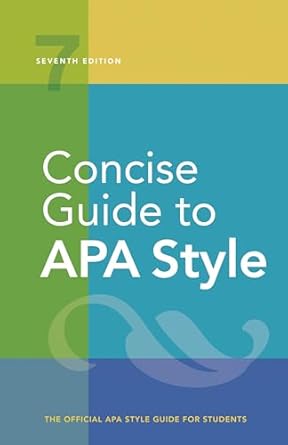[toc]
copyright fair use a guide for researchers
Concise Guide to APA Style: 7th Edition (OFFICIAL)
Page 231 Review
Copyright and Fair Use: A Critical Analysis
Understanding copyright and fair use is crucial for academic writing and research.
The provided excerpt from the ebook delves into the nuances of using copyrighted material, offering practical guidance for authors and researchers.
This analysis will dissect the key concepts presented, highlighting their implications and providing context.
Fair Use Explained
The excerpt begins by addressing the circumstances under which one can “adapt a copyrighted table, figure, image, test item, questionnaire, or long quotation without obtaining permission as long as you credit the work with a copyright attribution.” This is a foundational principle of fair use, emphasizing that attribution is paramount.
However, it also cautions researchers to “check with the copyright holder to determine what they consider fair use, especially for items from measures, questionnaires, scales, tests, or instruments.”
The document then outlines specific criteria to evaluate whether a particular use qualifies as fair.
Let’s examine these criteria in detail:
- Academic vs.
Commercial Use: “It is for use in an academic work and not for profit (e.g., paper for a class, article in a scholarly journal).” This condition underscores the importance of non-commercial intent in fair use claims.
Academic use is generally more favorably considered than commercial exploitation.
- Factual vs.
Creative Content: “It represents facts or data (e.g., a chart or diagram) rather than creative self-expression (e.g., artwork, although some famous works of art are in the public domain and thus do not require permission).” This highlights the distinction between factual information, which is often subject to fair use, and creative works, which are typically more protected.
- Proportion of Use: “It is small in relation to the entire work (e.g., a chart within a report) and is not the whole work or the heart of the work (e.g., a whole cartoon).” The extent of the borrowed material relative to the entire work is a key factor.
Using a small portion is more likely to be considered fair use than reproducing the entire work or its essential elements.
- Market Impact: “Reproducing the work will not hurt the market or potential market for the original.” This is perhaps the most critical consideration.
If the use of the copyrighted material negatively impacts the original work’s market value, it is less likely to be deemed fair use.
Photographs of Identifiable People: A Separate Consideration
The excerpt rightly points out that “If you photographed a person who is identifiable in the photograph, you must submit a signed release from that person along with the paper.” This is distinct from copyright; it concerns the individual’s right to control the use of their likeness. “This is not a matter of copyright but rather of permission from the individual to have their likeness reproduced.” Unless the photograph is of the author themselves, a release is typically required.
Securing Permission: The Process
When fair use is not applicable, obtaining permission is essential.
The document provides practical advice: “When permission is required, you must request permission to reproduce the material in all formats (e.g., both print and electronic) from the copyright holder.” Furthermore, it suggests, “Many publishers provide a way for authors to request permission on their websites (e.g, to request permission to reprint or adapt material published by APA, see https://on.apa.org/2Aswons).”
The permission request should be thorough, specifying “the details about the material (e.g., title of the work, year of publication, page number) and the nature of the reuse (e.g., ina course paper).” It also notes that “Some publishers also require that you obtain permission from the author of the original work.” Obtaining permission often involves “the inclusion of a copyright attribution and payment of a fee per table, figure, or page.”
Conclusion
Navigating copyright law can be complex, but understanding the principles of fair use and the process for securing permission is vital for ethical and legal academic writing.
This excerpt provides a valuable framework for researchers to ensure they are using copyrighted material responsibly.
Buy full ebook for only $18: https://www.lulu.com/shop/american-psychological-association/concise-guide-to-apa-style-7th-edition-official/ebook/product-rmzpq54.html?page=1&pageSize=4
Copyright Fair Use A Guide For Researchers
Read more: Author Names & Bylines: A Guide to Academic Paper Formatting


Leave a Reply